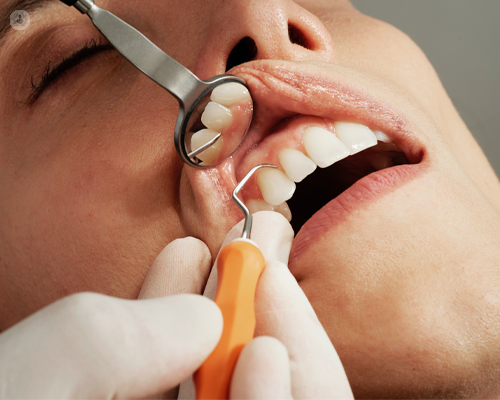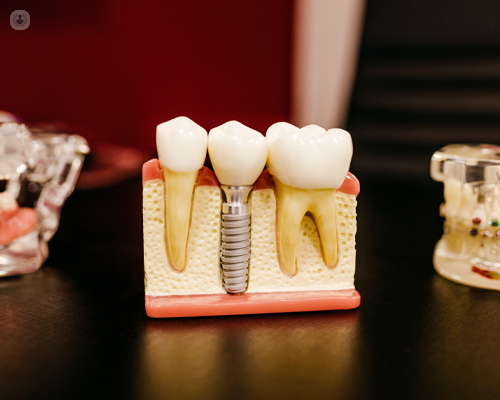Detecting, removing and preventing tooth decay: this is how it works!
Autore:Hardly visible to the naked eye can lie interdental decay (in between the teeth). Decay in the interdental space is the most common type of decay in adult dentition and usually goes unnoticed for a long time. As a result, quite a bit of tooth substance can already be damaged when it is finally detected. In this article, expert dental surgeon Dr Behnoosh Bidar describes all we need to know about tooth decay.

Unmasking interdental decay
Since the tooth decay is located between two adjacent teeth, it is often difficult to see from simply looking at our teeth in the mirror. Symptoms can include pain (toothache), sensitivity and, in some cases, a bad taste or bad breath.
How do dentists detect decay in the interdental space?
A thorough examination of your teeth is carried out using a dental mirror and probe, magnifying dental loupes and excellent lighting. Additionally, individual teeth can be checked for sensitivity with the pressure of air. Often the dentist can already assess visually whether a decay therapy needs to be carried out.
If even after a thorough visual inspection the diagnosis remains unclear, it is hugely beneficial to take radiographs (X-rays). This allows the dentist a detailed insight into the spaces between the teeth which can make identifying decay possible.
Treatment of tooth decay: remineralisation, fillings, crowns
The treatment of decay depends on the severity and depth of the damage. If the decay has not yet spread beyond the enamel layer (outer tooth surface layer), then applications of fluoride varnish can help to re-mineralise the softened tissue to restrengthen the enamel and arrest the decay. In the event of the decay spreading to the deeper tooth tissues, the dentist must mechanically remove the infected tissue with a dental drill and usually will use local anaesthetic to make the procedure painless.
The dentist then rebuilds the tooth with an appropriate tooth coloured filling material which can consist of ceramic or composite.
A root canal treatment may also be necessary if the decay has spread into the tooth nerve (pulp). Due to modern treatment methods and precise planning, the success rate of root canal treatment is now very high (around 90 per cent). In addition, root canal treatment is always performed under local anaesthesia, so that patients do not have to worry about pain. A final tooth-coloured all-ceramic crown or partial crown protects the treated tooth.

Alternative to drilling: laser and decay infiltration
Some patients choose to have an alternative to drilling when they have tooth decay. So-called decay infiltration can be used in the initial stage, whereby the dentist removes the affected tooth surface and seals it with a special flowable plastic. Now acids and harmful bacteria can no longer penetrate the tooth enamel.
Preventing tooth decay: what you can do
The interdental spaces are usually impossible to reach with the toothbrush alone. That is why dental floss and interdental brushes should also be used in your daily oral hygiene regime to prevent harmful bacteria from settling between the teeth. In addition to good daily oral hygiene habits, you should always have six-monthly check-ups with your dentist which allows initial decay to be diagnosed and treated immediately.



